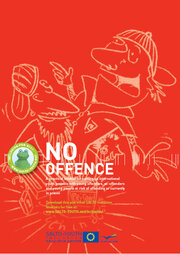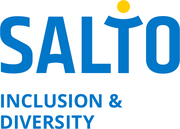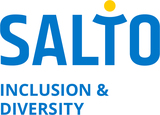CEMEA del Mezzogiorno - Giant Steps
CEMEA del Mezzogiorno
CEMEA (Active Education Methods' Training Centres) started in France in 1937 with the aim of developing democratic and participative behaviours. After the war, Cemea spread all over the world. Today the Cemea movement is active in 29 European, African and American countries, co-ordinated by the International Federation with it's headquarter in Paris. In Italy, Cemea started in 1950 and they gathered in the Italian Federation of CEMEA in 1974. Cemea refers to the active education: a kind of education that tends to get free the human being, offering situations in which anyone - child, young people, adult - can become conscious of the world around her/him, contributing to its evolution, in a perspective of individual and social development.
CEMEA del Mezzogiorno in Italy has been hosting in its educational services Italian young people "on probation" since 1998 and works in an area of Rome with a very high rate of unemployment, big presence of second generation immigrants and "street young people". The centre run by CEMEA represents the only alternative to 'bad company', alcohol and drugs.
Young people 'on probation' are accompanied by educators who stimulate these young people to practice roles of leadership and responsibility to which they were not used to. In this way CEMEA wants to improve their self-esteem and awareness of their own abilities.
CEMEA has developed a more direct collaboration with the Ministry of Justice and with their probation officers. A strategy entitled JUSTice in Time has been created with the idea of complementing the work that the probation officers already do with these young people. This strategy consists of the creation of mobility opportunities (individually or in groups) through the Youth in Action programme and it supports the process of support and the "on probation" period that the Ministry provides with an educative process based on non formal education.
The process begins through the youth exchanges as a first experience to get closer to international activities and a preparation to mobility and knowledge of 'the other'. Then, the following step would be short term European Voluntary Service and finally long term European Voluntary Service projects after their "on probation" period. After that they could be "youth leaders" themselves and function as resource persons for other young people.
^^ top ^^
Background of the target group
The young people CEMEA works with are aged between 16 and 21 years old. They have all committed a crime and are usually pre-selected by the probation officer. It is not important which kind of crime they have committed. What is important is the kind of progress they are making, the risk for themselves and the others and their legal conditions (some of these young people cannot leave the country). All this is taken into consideration by their probation officer who evaluates in which cases the young people could benefit from participation on an international activity.
CEMEA works both with girls and boys but the majority is male. For this reason, in order to create gender balance, mixed groups are formed by involving young people from different backgrounds. All young people benefit from this, especially juveniles, because normally they have a very straight sense of identity and they feel they belong to a closed circle of people (gangs). By being and living with people different from them, they put down many stereotypes and open their minds.
A good example of this happened in a youth exchange in Austria. One of the young people had a light mental disability and during the first days he had some difficulties in getting integrated. The staff talked with the rest of the Italian group composed by 3 juveniles, 1 Iranian immigrant and 1 girl that lives in a "hosting centre" and asked them to help the staff to integrate him. Especially one of the young people from the Ministry of Justice helped him a lot by introducing him to other participants from other countries, never leaving him alone and they became really good friends.
^^ top ^^
Passi da Gigante
At the moment CEMEA is involved in the development of an innovative method within the Youth in Action programme to encourage the participation of disadvantaged young people in international mobility programmes.
The project has been developed, aiming at supporting young people with less opportunities who do not have the confidence necessary to participate in Short Term European Voluntary Service. The concept is a complete cycle of new activity projects, training and access to existing / external European opportunities.
Passi da Gigante (Giant steps) involves 8 partner from 6 different countries and was created in Innsbruck in 2005.
One of the main objectives of this project is to facilitate the entry to European Voluntary Service for young people who are not ready to enter European Voluntary Service as the very first step.
Four different steps
- The project started with a seminar that brought together European Voluntary Service centres, local youth workers and probation officers in order to explain the process and to teach them about the different possibilities of the Youth in Action Programme. This all to help them to identify suitable candidates, to prepare the young people and to start the organisation of the activities.
- The second step was a Youth Exchange in Austria involving 6 countries. Each country brought 5-6 young people and two youth workers. The main activity of the Youth Exchange was the renovation of a community building which gave the participants the chance to create something together which was visible and concrete, a real outcome. Next to that sport activities, excursions and other activities were done by the young people.
- During the youth exchange, an introduction was done to the other actions of theYouth in Action programme, with a special focus on European Voluntary Service. All partner organisations presented their own hosting projects so that participants could have a general view of the concrete possibilities.
At the moment of writing (2007) the project is in its third phase. A catalogue of existing short term European Voluntary Service projects is offered to the participants, describing the type of work, the location, the dates etcetera. Off course not all participants will do an European Voluntary Service-project, some of them will stop at this stage, or they will do a project later. - The last step of the cycle will be again a seminar in which the work will be evaluated and improvements will be suggested for the next project. Because that seminar will be also the launch meeting for the next Passi da Gigante project.
^^ top ^^
Challenges and difficulties to overcome
CEMEA and their partners in this project are quite happy about and proud of the results so far. While running the project they also met some challenges and difficulties that they had to overcome.
- Money
- Although the Youth in Action programme funds the main part of a programme like this, still additional money is needed. This is a problem, because especially his young people normally have no money and it is not easy to find local funding for this kind of target group (it is not attractive for local sponsors).
- Special support
- This project has been possible because of the collaboration with already existing institutions that deal locally with this group of 'problematic' young people.
- The young people needs to be guided before, during and after the activity. The activities are simply tools, what counts is the guided process. Working with these young people requires a lot of energy and specific competences, but at the same time a good knowledge of the work with international activities. Probation officers and social workers have specific competences for working with them but miss the knowledge about the international dimension of the work. At the same time, international youth workers have many competences about international work but do not have specific skills in the work with "problematic" young people. The challenge was taken up by a strong collaboration between the two different groups of workers.
- Long term cooperation
- When dealing with these young people, it is important to give them concrete and feasible opportunities, and the only way to obtain this is through the work with solid and reliable partners and a concrete programme. To establish such collaboration is a long and difficult process. Besides this, working with disadvantaged young people requires a lot of time that many responsible of organisations do not have. Another problem is the big turnover of people in organisations while this strategy needed a constant work for a long time.
- In this specific case, CEMEA had an added problem. They collaborated with a public institution (a Ministry) and usually it is difficult to involve them in this kind of single activities. It is important to explain them the general objectives and to show them the benefits for as well their young people and themselves.
- The approval of the single projects
- All the different phases of this project have been presented to different National Agencies as individual projects. But all of them were necessary to have a successful strategy. For instance, initially, the preparation seminar had been presented in Spain but had not been approved so it was decided to present it in Poland. All this caused a delay of 2 months and so the period that was planned to select participants was too short. The next time it would be better to present it as a Europe-wide project or to involve National Agencies in the overall strategy so that they see the wider project for which all the phases are fundamental. Opportunities for this are improved in the new Youth in Action programme where it is now more possible to apply for linked activities.
- Personal motivation/involvement
- This project, as many other projects, depends a lot on individual motivation and involvement. It requires a lot of efforts in terms of energy, time and money. Keeping organisations motivated depends very much on the personal motivation of the representative.
- Presence of sufficient staff
- Dealing with these young people is not easy and it is important to have a good proportion leader/participant. The participation of two leaders for each national group has been fundamental for the success of the project. Unfortunately, not all National Agencies agree on this necessity, so this project would not have been supported in any country. This kind of extra support is normally easily accepted when dealing with disability, because the need is "physically evident" but it is not so evident when dealing with young people with social problems.
- A possible problem that might pop up
- Now the Youth Exchange has taken place CEMEA is trying to motivate young people to join short term European Voluntary Service projects. These young people have all committed a crime and in some countries it is not possible to work (even voluntarily) with some categories (for example: small children) if you have committed a crime. CEMEA will have to be very careful and verify all this before offering the placement to the young people.
Altogether a lot to take into account and many challenges to tackle. But the people at CEMEA certainly will continue. The motivation is high because of the good results so far. Many other giant steps will follow.
- You can contact Cemea via www.replay.cemea.it
^^ top ^^
 www.salto-youth.net/
www.salto-youth.net/
NoOffence/

 Protected from exclusion
Protected from exclusion
Downloads
The following downloads are available:
- No Offence - projects with (ex) offenders - 2010 update
How to organise (international) youth projects with young offenders, ex-offenders and young people at risk of offending or currently in prison - despite some limitations. Based on SALTO TC No Offence 2006.
